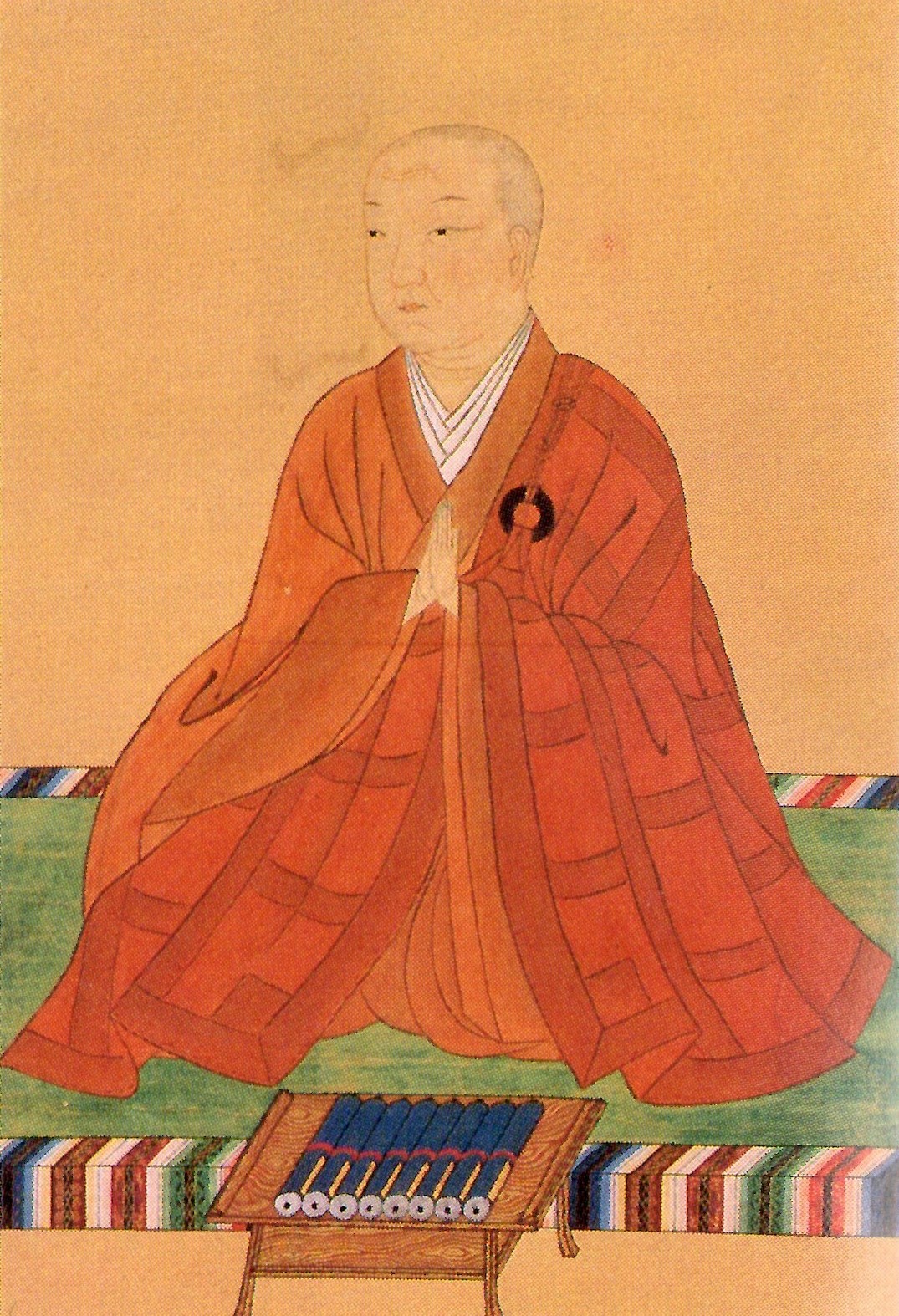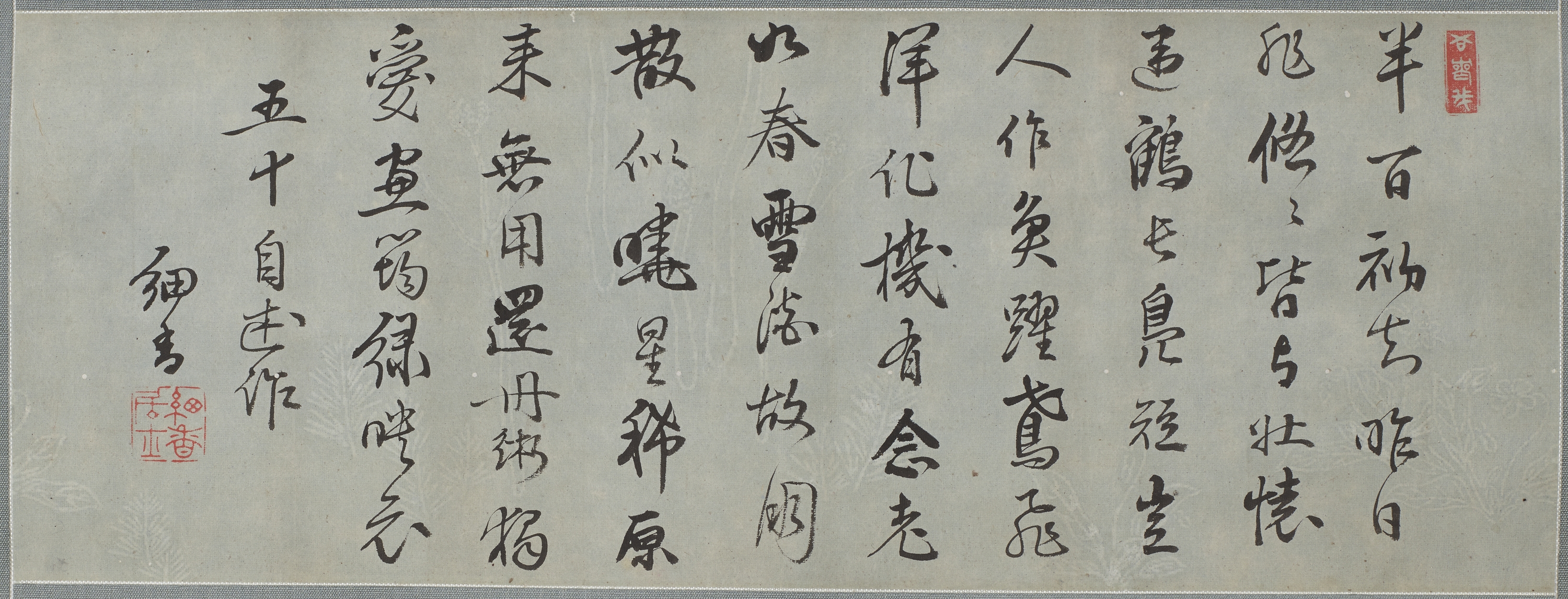|
Teruko, Princess Ake
was a Japanese imperial princess and artist. She was the eighth daughter of Emperor Go-Mizunoo. The Kosetsu Memorial Museum held a special exhibition on Japanese female artists, in which her work was also exhibited. See also * Kiyohara Yukinobu (1643–82) * Tokuyama Gyokuran (1727/8–84) * Ema Saikō was a Japanese painter, poet and calligrapher celebrated for her Chinese-style art in the late Edo period. Her specialisation as a bunjin, a painter of Chinese-style art using monochrome ink, was the bamboo plant which she perfected and which ... (1787–1861) References 1634 births 1727 deaths 17th-century Japanese artists Japanese princesses Edo period Buddhist clergy Japanese women artists 18th-century Japanese artists 17th-century Japanese women 18th-century Japanese women {{japan-royal-stub ... [...More Info...] [...Related Items...] OR: [Wikipedia] [Google] [Baidu] |
Emperor Go-Mizunoo
was the 108th Emperor of Japan, according to the traditional order of succession. Go-Mizunoo's reign spanned the years from 1611 through 1629, and was the first emperor to reign entirely during the Edo period. This 17th-century sovereign was named after the 9th-century Emperor Seiwa, sometimes posthumously referred to as because this is the location of his tomb, and translates as "later", and thus, he could be called the "Later Emperor Mizunoo". The Japanese word ''go'' has also been translated to mean the "second one", and in some older sources, this emperor may be identified as "Mizunoo II". Genealogy Before Go-Mizunoo's accession to the Chrysanthemum Throne, his personal name (his ''imina'') was or Masahito.He was the third son of Emperor Go-Yōzei and his consort, Konoe Sakiko.Price Kotohito had 11 full siblings (7 sisters and 4 brothers). He resided together with concubines in the Dairi of the Heian Palace. He had 33 children with his empress consort and 6 concubines. ... [...More Info...] [...Related Items...] OR: [Wikipedia] [Google] [Baidu] |
Kiyohara Yukinobu
Kiyohara Yukinobu (1643–1682) was a Japanese painter and one of the foremost women identified with the Kanō school. Her father Kusumi Morikage was also a painter and her mother Kuniko was the niece of his longtime teacher and patron Kanō Tan'yū. Yukinobu lived in Kyoto and likely studied under her father. Her work covered a wide variety of formats ranging from small scrolls to large screens. Thematically she was skilled in the Yamato-e style but was also notable for producing many works depicting women including legendary figures such as Murasaki Shikibu. Because many of Yukinobu's works are signed and sealed with her name, it suggests she had achieved enough recognition to receive commissions from middle class townspeople and samurai. A pair of her screens, ''Birds and Flowers of the Four Seasons'' (late 17th – early 18th century) was shown publicly for the first time in 2015 as part of an exhibition at the Kosetsu Memorial Museum in Tokyo. Ihara Saikaku's ''The Life of a ... [...More Info...] [...Related Items...] OR: [Wikipedia] [Google] [Baidu] |
Tokuyama Gyokuran
was a Japanese Bunjinga painter, calligrapher, and poet. She was famous in Kyoto, Japan, during her lifetime, and she remains a celebrated artist in Japan. Gyokuran was born of a decade long affair between her mother, Yuri, and a high ranking retainer of the ruling Tokugawa shogun. Her parents gave her the birth name . As a child, she was given the art-name Gyokuran, meaning "Jewel Waves," most likely by her painting teacher Yanagisawa Kien (1707–1758). Gyokuran married fellow artist Ike no Taiga, and she is best known by her married name Ike Gyokuran. Her surname before marriage was Tokuyama, and she is also known as Tokuyama Gyokuran. Early life and education Like her mother, Machi composed ''waka'' poetry, but excelled in painting and Calligraphy. Gyokuran began to learn to paint at an early age under famous literati painter Yanagisawa Kien, who was a regular at her mother's teahouse. It is likely that he was the one to introduce her to Ike no Taiga, who became her teac ... [...More Info...] [...Related Items...] OR: [Wikipedia] [Google] [Baidu] |
Ema Saikō
was a Japanese painter, poet and calligrapher celebrated for her Chinese-style art in the late Edo period. Her specialisation as a bunjin, a painter of Chinese-style art using monochrome ink, was the bamboo plant which she perfected and which inspired her pen name. Her kanshi poetry is known for being self-reflective and having autobiographical quality. She was one of the most well-known and most praised Japanese artists of her age. Early life Ema Saikō was born in 1787 in Ōgaki, Mino Province. She was the first daughter born into the wealthy Ema family. Not much is known about her mother or siblings. Her father was Ema Ransai, a scholar of rangaku (‘Dutch studies’), a discipline entailing knowledge of chemistry and anatomy brought in by the Dutch, only Western foreigners allowed contact to Japan. He soon recognised his daughter's talent in painting and began to support her education. Ema Saikō began to paint at an early age: her bamboo paintings date back to 1792, ... [...More Info...] [...Related Items...] OR: [Wikipedia] [Google] [Baidu] |
1634 Births
Events January–March * January 12– After suspecting that he will be dismissed, Albrecht von Wallenstein, supreme commander of the Holy Roman Empire's Army, demands that his colonels sign a declaration of personal loyalty. * January 14– France's ''Compagnie normande'' obtains a one-year monopoly on trade with the African kingdoms in Guinea. * January 19– Charles IV, Duke of Lorraine abdicates in favor of his brother Nicholas II, who is only able to hold the throne for 75 days. * January 24– Ferdinand II, Holy Roman Emperor, signs a classified order dismissing Albrecht von Wallenstein, the supreme commander of the Imperial Army. * February 18– Emperor Ferdinand II's dismissal of Commander Wallenstein for high treason, and the order for his capture, dead or alive, is made public. * February 25– Rebel Scots and Irish soldiers assassinate Bohemian military leader Albrecht von Wallenstein at Cheb. * March 1 – The Russians ... [...More Info...] [...Related Items...] OR: [Wikipedia] [Google] [Baidu] |
1727 Deaths
Seventeen or 17 may refer to: *17 (number), the natural number following 16 and preceding 18 * one of the years 17 BC, AD 17, 1917, 2017 Literature Magazines * ''Seventeen'' (American magazine), an American magazine * ''Seventeen'' (Japanese magazine), a Japanese magazine Novels * ''Seventeen'' (Tarkington novel), a 1916 novel by Booth Tarkington *''Seventeen'' (''Sebuntiin''), a 1961 novel by Kenzaburō Ōe * ''Seventeen'' (Serafin novel), a 2004 novel by Shan Serafin Stage and screen Film * ''Seventeen'' (1916 film), an American silent comedy film *''Number Seventeen'', a 1932 film directed by Alfred Hitchcock * ''Seventeen'' (1940 film), an American comedy film *''Eric Soya's '17''' (Danish: ''Sytten''), a 1965 Danish comedy film * ''Seventeen'' (1985 film), a documentary film * ''17 Again'' (film), a 2009 film whose working title was ''17'' * ''Seventeen'' (2019 film), a Spanish drama film Television * ''Seventeen'' (TV drama), a 1994 UK dramatic short starring Christien ... [...More Info...] [...Related Items...] OR: [Wikipedia] [Google] [Baidu] |
17th-century Japanese Artists
The 17th century lasted from January 1, 1601 ( MDCI), to December 31, 1700 ( MDCC). It falls into the early modern period of Europe and in that continent (whose impact on the world was increasing) was characterized by the Baroque cultural movement, the latter part of the Spanish Golden Age, the Dutch Golden Age, the French ''Grand Siècle'' dominated by Louis XIV, the Scientific Revolution, the world's first public company and megacorporation known as the Dutch East India Company, and according to some historians, the General Crisis. From the mid-17th century, European politics were increasingly dominated by the Kingdom of France of Louis XIV, where royal power was solidified domestically in the civil war of the Fronde. The semi-feudal territorial French nobility was weakened and subjugated to the power of an absolute monarchy through the reinvention of the Palace of Versailles from a hunting lodge to a gilded prison, in which a greatly expanded royal court could be more easily k ... [...More Info...] [...Related Items...] OR: [Wikipedia] [Google] [Baidu] |
Japanese Princesses
Japanese may refer to: * Something from or related to Japan, an island country in East Asia * Japanese language, spoken mainly in Japan * Japanese people, the ethnic group that identifies with Japan through ancestry or culture ** Japanese diaspora, Japanese emigrants and their descendants around the world * Japanese citizens, nationals of Japan under Japanese nationality law ** Foreign-born Japanese, naturalized citizens of Japan * Japanese writing system, consisting of kanji and kana * Japanese cuisine, the food and food culture of Japan See also * List of Japanese people * * Japonica (other) * Japonicum * Japonicus * Japanese studies Japanese studies (Japanese: ) or Japan studies (sometimes Japanology in Europe), is a sub-field of area studies or East Asian studies involved in social sciences and humanities research on Japan. It incorporates fields such as the study of Japanese ... {{disambiguation Language and nationality disambiguation pages ... [...More Info...] [...Related Items...] OR: [Wikipedia] [Google] [Baidu] |
Edo Period Buddhist Clergy
Edo ( ja, , , "bay-entrance" or "estuary"), also Romanization of Japanese, romanized as Jedo, Yedo or Yeddo, is the geographical renaming, former name of Tokyo. Edo, formerly a ''jōkamachi'' (castle town) centered on Edo Castle located in Musashi Province, became the ''de facto'' capital of Japan from 1603 as the seat of the Tokugawa shogunate. Edo grew to become one of the List of largest cities, largest cities in the world under the Tokugawa. After the Meiji Restoration in 1868 the Government of Meiji Japan, Meiji government renamed Edo as ''Tokyo'' (, "Eastern Capital") and relocated the Emperor of Japan, Emperor from the historic capital of Kyoto to the city. The era of Tokugawa rule in Japan from 1603 to 1868 is known eponymously as the Edo period. History Before Tokugawa Before the 10th century, there is no mention of Edo in historical records, but for a few settlements in the area. Edo first appears in the Azuma Kagami chronicles, that name for the area being probably ... [...More Info...] [...Related Items...] OR: [Wikipedia] [Google] [Baidu] |
Japanese Women Artists
This is a list of women artists who were born in Japan or whose artworks are closely associated with that country. A *Chako Abeno, manga artist *Fuku Akino (1908–2001), painter *Akira Amano (born 1973), manga artist *Kozue Amano (born 1974), manga artist *Yasuko Aoike (born 1948), manga artist *Kotomi Aoki (born 1980), manga artist *Ume Aoki, manga artist *Chiho Aoshima (born 1974), pop artist *Hina Aoyama (born 1970), paper-cutting artist, illustrator *Kiyoko Arai, manga artist *Hiromu Arakawa (born 1973), manga artist *Sakura Asagi, illustrator, manga artist * Yū Asagiri, manga artist *George Asakura (born 1974), manga artist *Hinako Ashihara, manga artist *Izumi Aso (born 1960), manga artist B *Ippongi Bang (born 1965), multimedia and manga artist C *Toriko Chiya, manga artist *Junko Chodos (born 1939), mixed media artist, now in the United States *Nanae Chrono (born 1980), manga artist * Clamp, manga artists E *Eiki Eiki (born 1971), manga artist * Kinuko Emi (1923–2015 ... [...More Info...] [...Related Items...] OR: [Wikipedia] [Google] [Baidu] |







